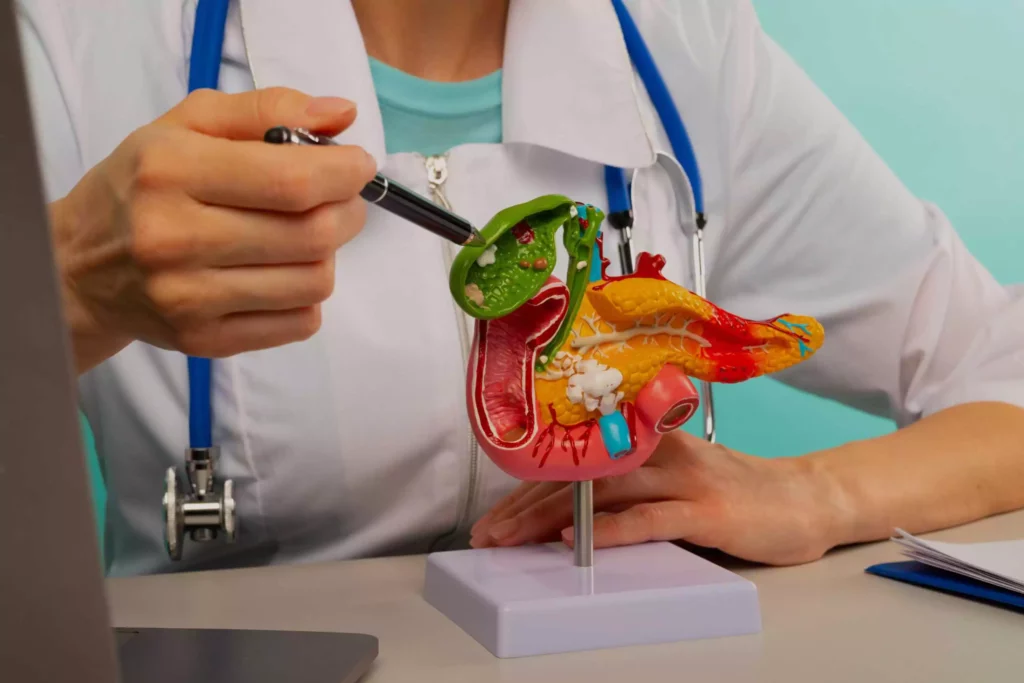Understanding Gallbladder Disease: Risks, Symptoms, and Prevention

The gallbladder might not be a topic of everyday conversation, but its health is crucial to our digestive system. This small, pear-shaped organ, located under the liver, stores bile produced by the liver, helping to break down fats. Despite its importance, gallbladder issues are often overlooked until they necessitate medical intervention, such as surgery.
The American Gastroenterological Association notes that over 25 million Americans suffer from gallstones, with a million new cases diagnosed annually. This prevalence underscores the importance of awareness, particularly for the elderly, as gallbladder problems can be life-threatening if unaddressed.
Common Gallbladder Issues
- Gallstones: These are small, pebble-like substances that form from cholesterol or bilirubin in the gallbladder or bile ducts. They can vary in size and may cause pain, nausea, and other digestive problems.
- Cholecystitis: This condition arises when a gallstone blocks bile from exiting the gallbladder, leading to pain and fever. It often requires surgical intervention.
- Gallstone Pancreatitis: This occurs when a gallstone blocks the bile duct shared with the pancreas, causing inflammation. Symptoms include chills, fever, nausea, and severe abdominal pain. It may require hospitalization and can be fatal in severe cases.
- Gallbladder Cancer: Although rare, this cancer has low survival rates, making early detection and treatment critical.
Symptoms of Gallbladder Disease
Common signs include stomach pain that may range from dull to sharp, heartburn, indigestion, vomiting, fever, chills, and abdominal tenderness. These symptoms necessitate medical evaluation to prevent complications.
Causes and Risk Factors for Gallbladder Disease
Gallbladder disease can stem from various factors, including diet, rapid weight loss, certain medical conditions, and genetics. Notably, risk factors include:
- Obesity: Excess weight can increase cholesterol levels in bile, leading to gallstones.
- Age: Individuals over 60 are more susceptible due to prolonged exposure to dietary and lifestyle factors.
- Gender and Medication: Women, especially those on hormonal treatments like estrogen, are at higher risk.
- Medical Conditions: Diseases like Crohn’s or diabetes increase the risk due to changes in bile composition or fat metabolism.
- Rapid Weight Loss: Losing weight too quickly can disrupt normal bile chemistry, leading to gallstones.
- Genetics: A family history of gallbladder disease significantly raises the likelihood of similar issues.
Preventing Gallbladder Disease
Preventative measures focus on maintaining a healthy lifestyle and balanced diet:
- Avoid high-fat foods: Limit intake of saturated fats found in fatty meats, butter, and certain oils.
- Incorporate nuts and fibers: Regular consumption of nuts and a high intake of fruits and vegetables can help manage cholesterol levels.
- Moderate alcohol use: A small amount of alcohol may reduce gallstone formation, but should be consumed in moderation.
- Regular check-ups: Annual medical examinations can help detect and manage potential issues early.
In conclusion, while the gallbladder may not be a frequent topic of discussion, its health is essential. Understanding the risks and symptoms associated with gallbladder disease, particularly in older adults, can lead to early intervention and prevention. By adopting healthier lifestyle choices and staying vigilant about digestive health, individuals can significantly reduce their risk of gallbladder-related complications. Here’s to maintaining the health of our gallbladder and overall well-being!
